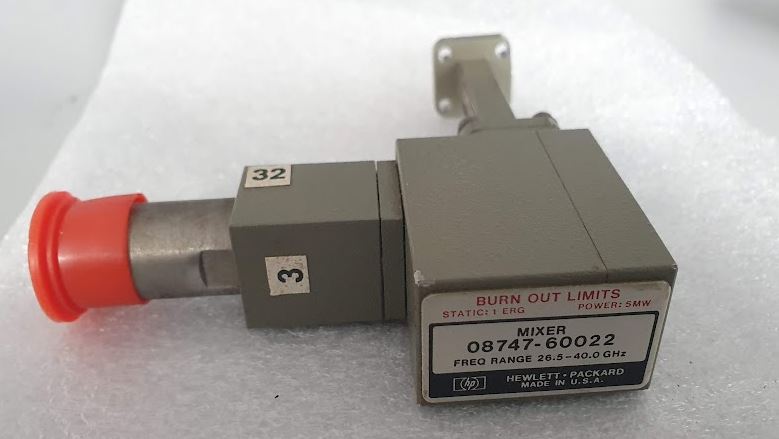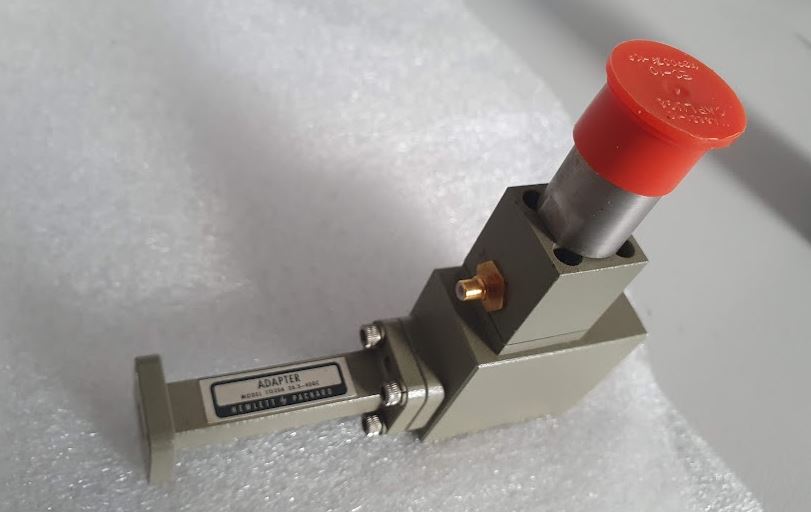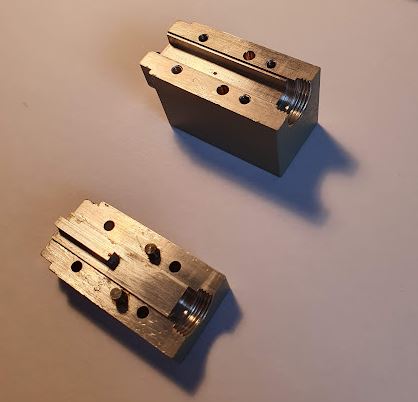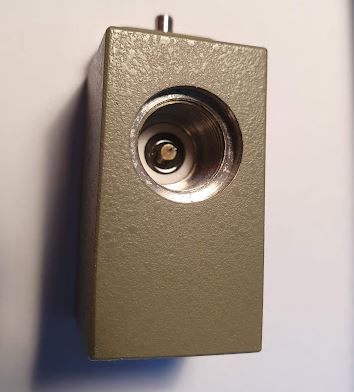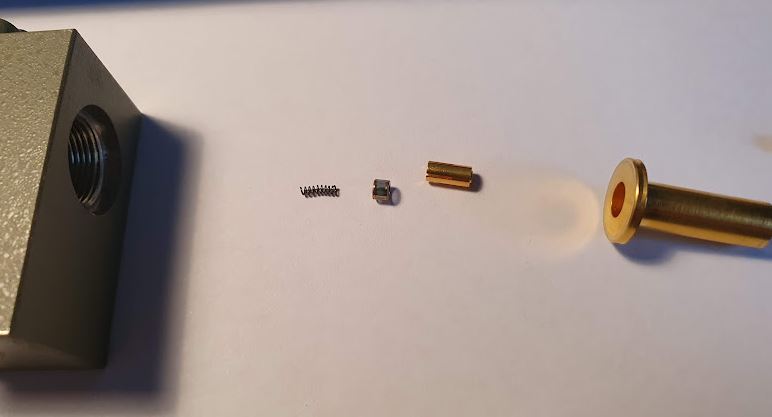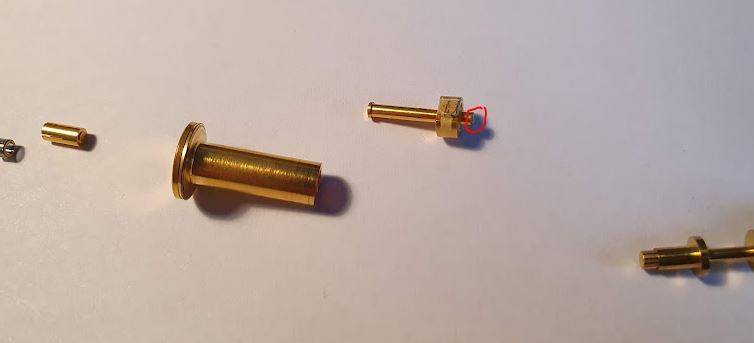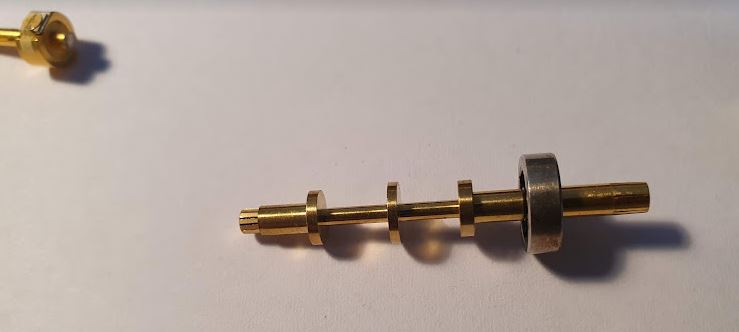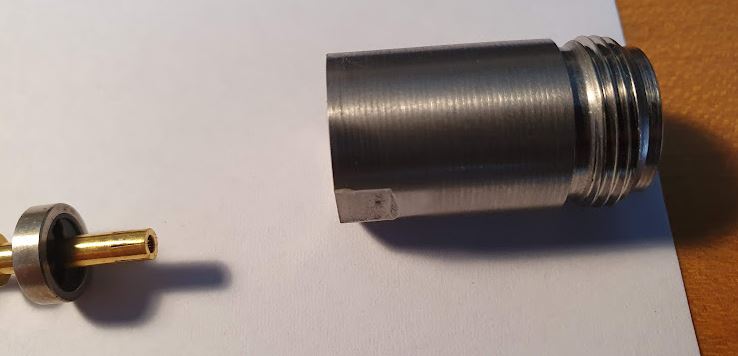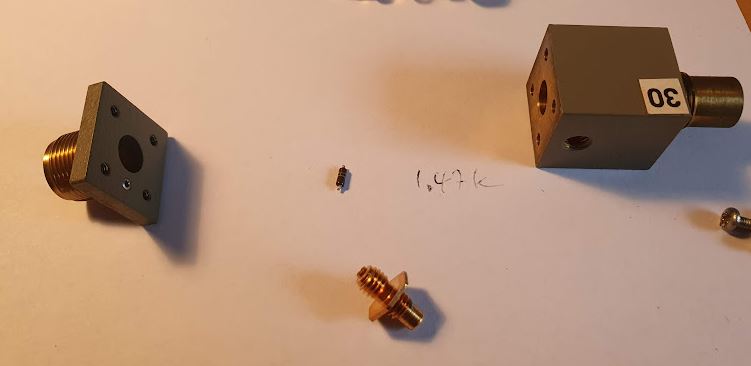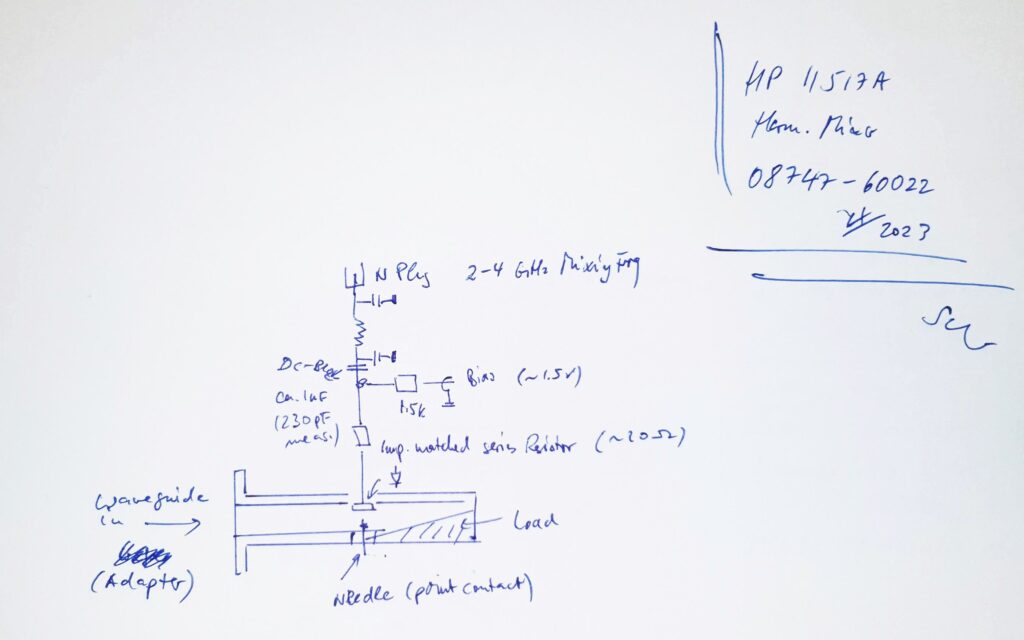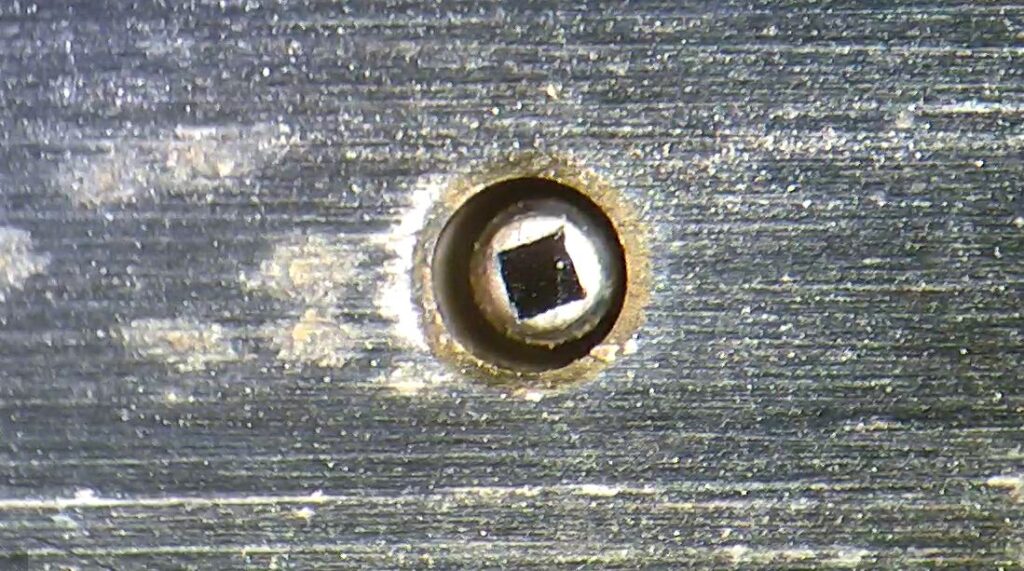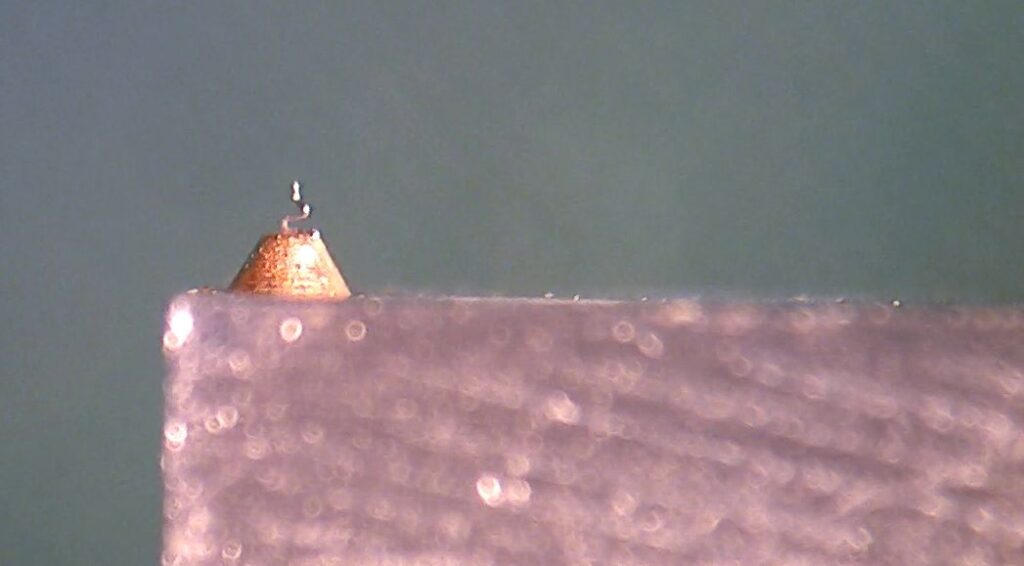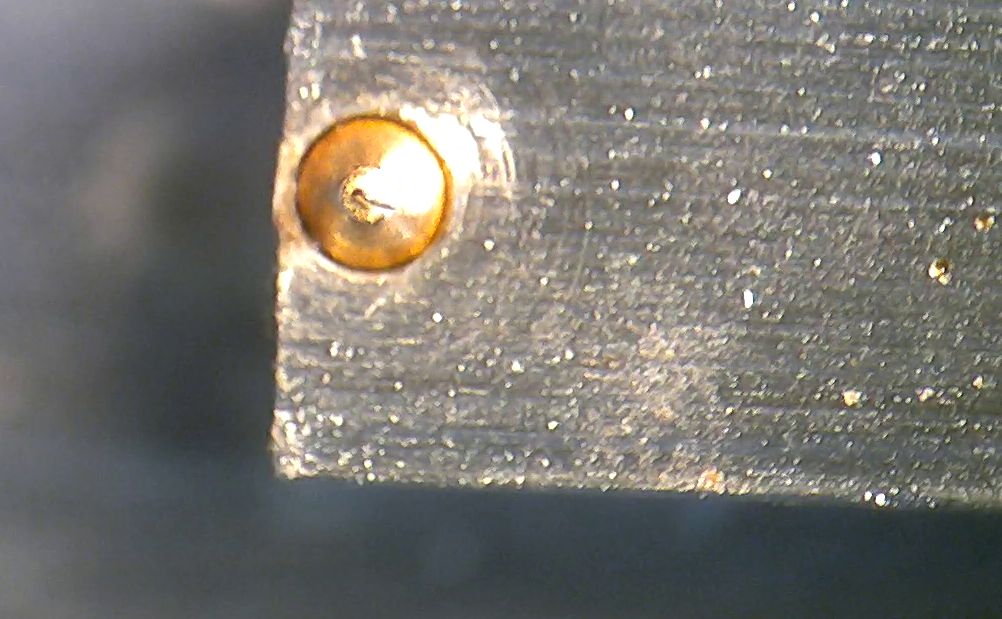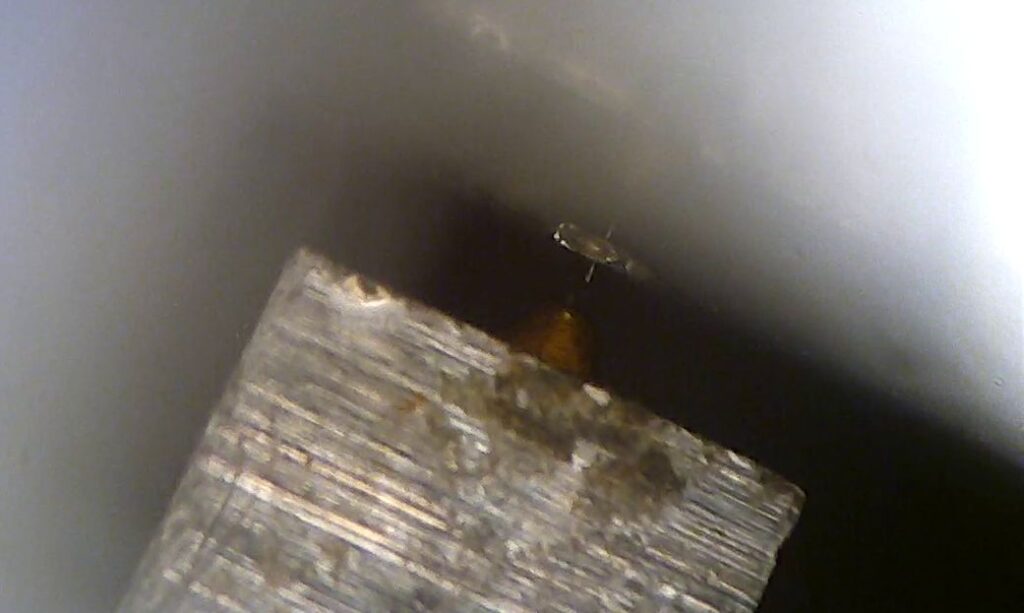As part of a HP R8747A 26.5-40 GHz reflection/transmission test unit (for the 8411A network analyzer; 6300 USD in 1973 — about 40 kEUR today), I got two HP 08747-60022 harmonic mixers, one didn’t seem to work right, the diode has just 0.2 V voltage drop. These were fairly fragile devices, only designed for 1 mW of power, and very static sensitive, point contact devices.
In addition to the regular 11517A, the 08747-60022 has a bias connection (needs about 1.5 V DC bias, center positive).
The main unit can work from 12 to about 40 GHz, with a set of adaptor waveguides.
The unit can be taken apart, all precision machined.
The diode is pressed in, on some holder (haven’t tried to remove it from the case).
There are several other precision parts, a coaxial resistor, held on to the diode with a spring.
There is also a spacer, with a very flat capacitor, a DC block. The spacer is modified to connect the center conductor to a surface at the perimeter (used for DC bias).
Further up, there is a low-pass, machined from a single piece and gold plated.
The N-type connector, stainless, is screwed on.
The DC bias uses a small 1.5 kOhms resistor, and a custom connector, so that the resistor is pushed onto the spacers’s connection.
Here, a quick schematic. Seems a lot of engineering went into this device…
Finally, we need a microscope to study further here, the diode (the square), about 0.25 mm side length. It is isolated from the case by an air gap.
The diode is made by a contact junction, a small tungsten(?) whisker.
Probably, this whisker needed some adjustment during manufacturing. I tried to adjust it a bit, but this didn’t change the diode characteristics of my broken unit, unfortunately (anyway, these devices are more for study than for use; currently using only cartridge-based diode mixers).
Also, looking into the waveguide of the assembled mixer, with good long-range optics, I could get a shot of the actual point contact in action. Very interesting historic technology.

